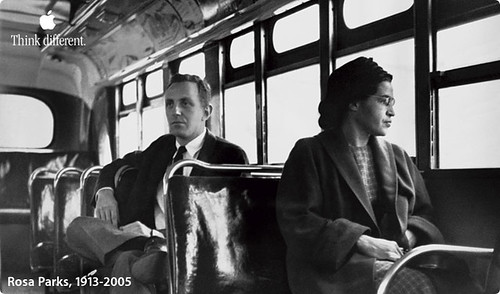
In the spirit of working through a list of questions before we design, I thought this inquiry might also prove beneficial. If we want to design for people outside of our context and culture, should we be asking these types of questions? What would a design outcome look like if we investigated even one of these differences in our design process?
66 Ways We Differ:
1. How we define "proper" behavior
2. How and when we greet each other
3. What's considered common courtesy
4. What's polite or impolite
5. How closely we stand to each other
6. The holidays we celebrate and how we celebrate them
7. How we show respect and disrespect
8. How and why we use money, credit and bartering
9. The range in which we negotiate
10. What is modest or risqué
11. What is embarrassing or shameful
12. What makes us feel good, and what depresses us
13. What makes us proud and what shames us
14. What, when and how we eat and drink
15. What we wear, and when and where we wear it
16. How we see and behave toward sickness and health
17. How and when we seek and use health services
18. What we find funny or sad
19. How and when we use means of transportation
20. What we buy and sell, and when, how and with whom we do it
21. When, where and how we sit and stand
22. If, how and when we touch each other
23. What we believe
24. What we value
25. What makes "common sense"
26. What are worthwhile goals in life
27. What is beautiful or ugly
28. The nature of God and other religious beliefs
29. What we believe we need and don't need
30. Whether privacy is desirable or undesirable
31. Who makes decisions and in what circumstances
32. Whether a person is in control of his or her own life and whether fate determines it
33. What should be communicated directly or indirectly
34. What or who is clean or dirty
35. What language, dialect and tone of voice we use
36. To whom we speak and to whom we do not speak
37. The role of the individual
38. The roles of men and women and how they should each behave
39. The roles of parents and children and how they should each behave
40. The importance of harmony in a group
41. The importance of competition between individuals
42. Social class
43. Educational levels
44. Hierarchy in business relationships
45. How time is understood
46. Whether schedules are important or unimportant
47. The importance of tradition and rituals
48. How often we smile, who we smile at and what it means when we smile
49. How strangers interact
50. How we interact with a person in authority
51. How we interact with a person serving (e.g. in a restaurant)
52. Relationships and obligations between friends
53. Relationships and obligations toward extended family and relatives
54. Facial expressions and other nonverbal behavior and gestures and when they are used
55. Crowd or audience behaviors
56. The importance of preparing for the future
57. How we see old age and how we value elders
58. Whether conversation should be formal or informal
59. What should be said and what should be left unsaid
60. Whether, when, how and with whom we make "small talk"
61. How we perceive what is friendly or unfriendly
62. How open or guarded we are with information
63. What behavior is ethical and what behavior is not ethical
64. How, whom and how much we entertain
65. How or whether we take turns, stand in line, etc.
66. How often we change jobs or move house and where and why
Source: Global Competence: 50 Training Activities for Succeeding in International Business, Jonamay Lambert, Selma Myers and George Simons, Editors, Amherst, Mass: HRD Press, 2000.
02 September 2010
Subscribe to:
Post Comments (Atom)

No comments:
Post a Comment